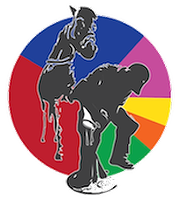Why Horse Owners Decide to Change Farriers
Data compared from two horse owner surveys conducted in 1993 and 2020 indicate several differences as reasons for switching horseshoers.
| Reasons | % Owners* | % Owners** |
| Routinely showed up 2 or more hours late | 92% | 12% |
| Failure to keep footcare appointments | 100% | 32% |
| Did not return messages | 91% | 24% |
| Farrier was often rude, confrontational with veterinarian or abusive with horses | 60% | 10% |
| Horses often lame after hoof-care work | 49% | 17% |
| Farrier showed up smelling of alcohol | 19% | 1% |
| Farrier lacked certification or credentials | 0% | 6% |
| Veterinarian recommended another farrier | 12% | 7% |
| Farrier moved out of area, or quit trimming, shoeing | 18% | 15% |
| Owner didn’t like the farrier | 9% | 7% |
* 1993 survey of 318 backyard horse owners who had changed farriers.
** 2020 survey of 1,475 horse owners who had changed farriers in past 3 years.
— Data from 1993 Pacific Coast Horseshoeing School and 2020 American Farriers Journal surveys on why horse owners change farrier
How Many Hours Per Week do Farriers do Hoof-Care Work?
The typical full-time farrier averages 40 hours of footcare work per week while dealing with 38 horses.
— 2020 American Farriers Journal Business Practices survey
Friday's Farrier Facts & Figures is brought to you by the International Hoof-Care Summit.
The International Hoof-Care Summit is returning to the Duke Energy Center and Hyatt Regency in Cincinnati, Ohio Jan. 24-27, 2023, for 4 days of focused learning that will change your footcare practice forever. With over 75 hours of classes, roundtables, lectures, networking, camaraderie and the world’s largest hoof-care products trade show, the 20th annual Summit is the best way for you to learn successful techniques and business-building strategies from today’s top footcare experts. Network with hoof-care professionals from around the world and get ideas and advice to meet your specific needs and interests. Learn more and register here.









Post a comment
Report Abusive Comment